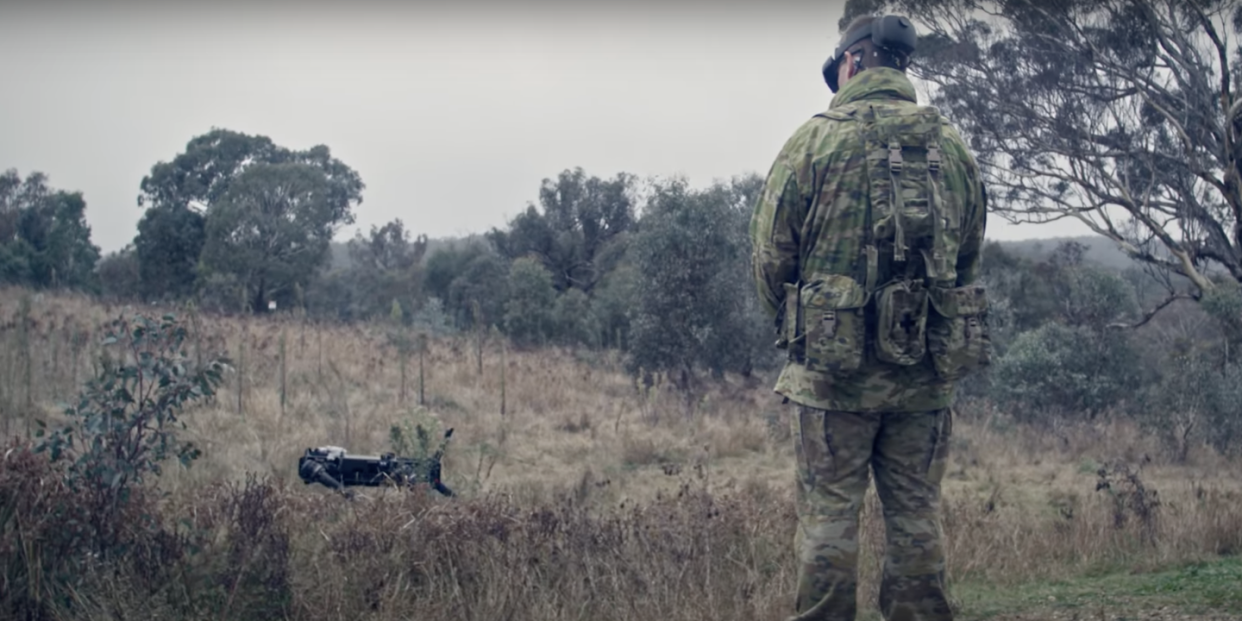Watch the Australian Army Use Telepathy to Control Robot Dogs

"Hearst Magazines and Yahoo may earn commission or revenue on some items through these links."
In partnership with a mix of technology researchers, the Australian Army is using headsets to read brain signals and control robot dogs via telepathy.
By eliminating verbal and input commands, thoughts are the only thing needed to control robots.
The army believes this system is transferrable to numerous autonomous military applications.
The mere thought of controlling a robot is good enough for the Australian Army. In a new test, the land force has paired with a host of technology researchers to use telepathy to control robot dogs, part of a new wave of research aimed at eliminating the need for verbal or physically inputted commands in the control of various autonomous systems.
“This collaboration focused on how we could create a brain robotic interface that will allow a soldier, rather than operating an autonomous system with a command console, to operate the system using brains signals,” Lieutenant Colonel Kate Tollenaar, of the Robotic and Autonomous Systems Implementation and Coordination Office (RICO), says in a video. “This is very much an idea about what might be possible in the future.”
And so far, all it takes is a well-connected headset and a robot.
Partnering with the University of Technology, Sydney, the Defence Innovation Hub, and the Defence Science and Technology Group, the RICO branch of the Australian Army tested HoloLens 2 headsets and Raspberry Pi-based AI decoders to capture brain waves and translate them into “explainable instructions” sent via telepathy to an autonomous robot dog, in this case a Vision 60 Ghost Robot.
It worked.
With the technology proving successful in the test field, the team conducted a second test that included a simulated operation of soldiers and ghost robot dogs working in tandem to clear an area.
“This technology enables me to not only control the ghost robot as well as monitor its video feed,” Sergeant Chandan Rana of the 1st/15th Royal New Lancers says in the video, “but it allows me to be situationally aware of my surroundings as well as my team, to be able to control all movements on the battlefield clearance.”
Tollenaar says the simple system can be used with several different autonomous systems. Robot dogs aren’t the only end use for the technology. The Australian Army believes it can work with aerial drones, drone swarms, ground weapon systems, and potentially a tiny robot army.
“We’re really excited,” Tollenaar says about supporting warfighters, “to see where the technology might go.”
You Might Also Like
